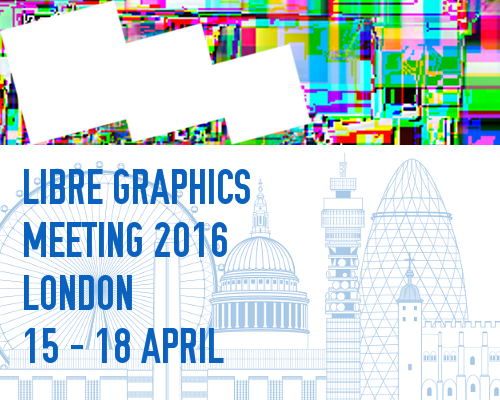Have you looked at the right hand side of this blog lately? You may have noticed, beneath the Flattr button and the tag cloud, something new. It’s not only new, but exciting, too. It’s an RSS feed of our git repository. It means that you get to see (almost in real time) what changes we’ve made recently to the progress files of the magazine, what we’ve been up to. We’re pretty pleased to be able to offer another little insight into the way we work. We hope you like it.
-

The call for participation for Libre Graphics Meeting 2016 is open!
 Latest commits in the magazine repository
Latest commits in the magazine repository- Ricardo Lafuente pushed to project branch master at Libre Graphics magazine /... May 25, 2018
- ginger coons pushed to project branch master at Libre Graphics magazine / lib... May 14, 2018
- Ana Isabel Carvalho pushed to project branch master at Libre Graphics magazin... May 9, 2018
- Ricardo Lafuente commented on issue #25 at Libre Graphics magazine / libregra... May 8, 2018
- Ricardo Lafuente pushed to project branch master at Libre Graphics magazine /... May 8, 2018
Tag Cloud
1.2 1.3 1.4 2.1 2.2 advertising announcement attention seeking awesome calls circulation columns command line cover distribution document freedom day donations download dummy editing events exhibitions features free culture gender glossary grants layout mirrors money organization planning print printing projects promotion resources sale shipping students submissions support svg talks technical problemsArchives
- March 2016
- December 2015
- March 2015
- February 2015
- May 2014
- April 2014
- March 2014
- February 2014
- January 2014
- February 2013
- November 2012
- September 2012
- August 2012
- May 2012
- February 2012
- January 2012
- December 2011
- October 2011
- September 2011
- July 2011
- June 2011
- May 2011
- April 2011
- March 2011
- February 2011
- January 2011
- December 2010
- November 2010
- October 2010
Recent Comments
- Riccardo on An announcement
- Dani on An announcement
- mozeye on An announcement
- manufactura on Announcing Libre Graphics magazine issue 2.4, Capture
- bb on Announcing Libre Graphics magazine issue 2.4, Capture